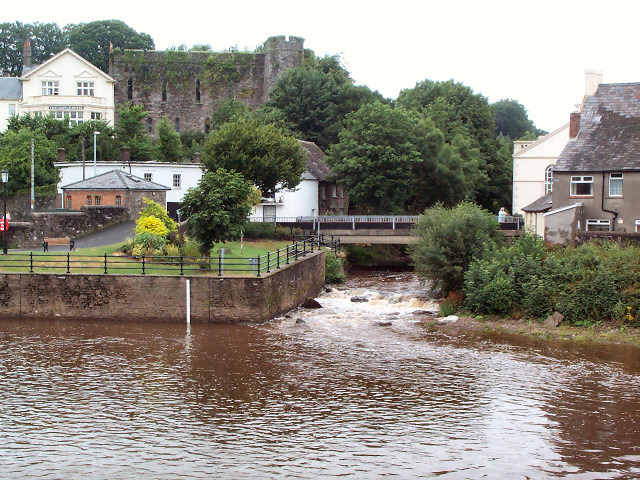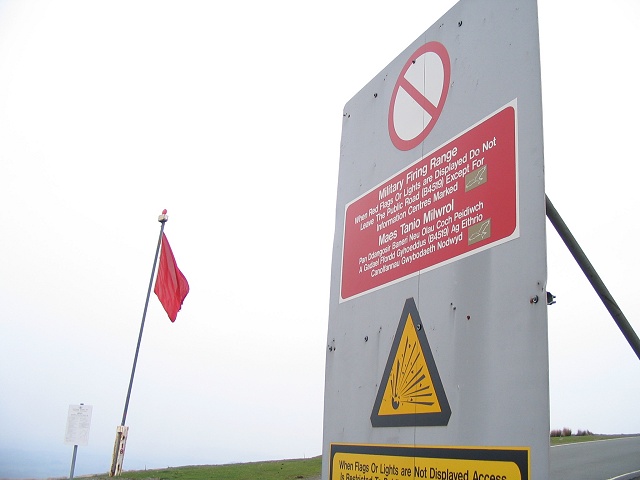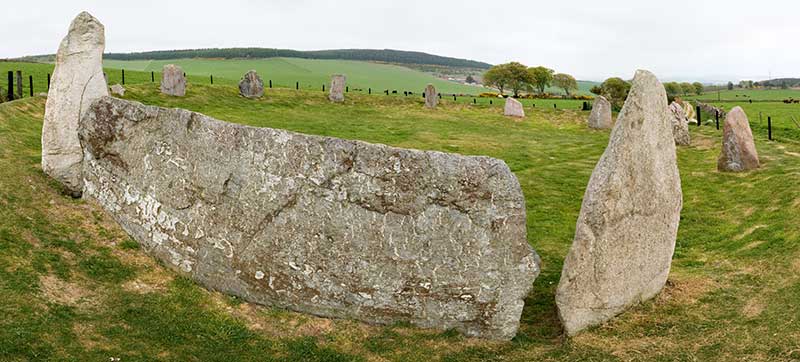|
Epynt
Mynydd Epynt () is an upland region of Mid Wales, within the county of Powys. It is bounded on the south by the upper stretch of the Usk Valley, on the north by the Irfon Valley, and on the east by the Wye Valley. Its western boundary is less distinct but lies east of the A483 Llandovery to Llanwrtyd Wells road. The area is an extensive plateau lying between 400 and 450m, drained by several southward-flowing rivers that empty into the River Usk; these include (from west to east) the Cilieni, the Nant Bran, the Afon Ysgir (with its two headwaters, the Ysgir Fechan and Ysgir Fawr) and the Afon Honddu. The Duhonw drains north-eastward into the River Wye. The highest point is a marilyn (having topographic prominence of at least 150m) of 478m. Since 1940, Mynydd Epynt has formed part of the Sennybridge Training Area, the largest military training zone in Wales. Etymology The name of the area is often given as ''Mynydd Eppynt'' or ''Eppynt'' in historical sources and it appea ... [...More Info...] [...Related Items...] OR: [Wikipedia] [Google] [Baidu] |
Afon Honddu (Powys)
The River Honddu ( i.e. ''hon-thee'') is a river in the county of Powys, mid Wales. Early recorded versions of the name are of the form ''Hothenei'' and ''hodni'' which are believed to contain the Welsh adjective 'hawdd', meaning 'pleasant' or 'easy', together with a suffix -ni. Later forms such as ''Honddey'' and ''Honthy'' have undergone metathesis whereby -''ddn''- became -''ndd''- (or -''thn''- to -''nth''- in anglicised form). It rises on Mynydd Epynt and flows southwards to join the River Usk at Brecon, which takes its Welsh name (''Aberhonddu'') from the river. The river has no major tributaries but acquires numerous streams during its 11-mile course. The valley of the Honddu is followed by the B4520 road which runs north from Brecon to Builth Wells. The road serves the hamlets of Upper Chapel, Lower Chapel, Pwllgloyw and Llandefaelog each of which, Pwllgloyw apart, sit at bridging points of the Honddu. Brecon Castle, now a hotel, sits at the lowermost crossing of ... [...More Info...] [...Related Items...] OR: [Wikipedia] [Google] [Baidu] |
Afon Ysgir
is a river which rises on the southern slopes of Mynydd Epynt in Powys, Wales. The tributaries known as Ysgir Fawr and Ysgir Fechan flow past the hamlets of Pont Rhyd-y-berry and Merthyr Cynog to combine at Pont-faen and continue past the village of Battle to join the River Usk at Aberyscir. Its upper reaches are within the military training area of SENTA, the British Army's Sennybridge Training Area. Near its mouth is a Motte-and-bailey, motte, the historic church at Aberyscir and east of the river, the Roman fort of CICVCIVM or Y Gaer, Brecon, Brecon Gaer. Along with other tributaries of the Usk, the river is designated as a special area of conservation or 'SAC' for various species of fish including lamprey, the twaite shad and the European bullhead.http://www.ccw.gov.uk Countryside Council for Wales website References {{DEFAULTSORT:Ysgir Epynt, Afon Ysgir Rivers of the Brecon Beacons National Park Rivers of Powys ... [...More Info...] [...Related Items...] OR: [Wikipedia] [Google] [Baidu] |
Sennybridge Training Area
The Sennybridge Training Area (SENTA) is a UK Ministry of Defence (United Kingdom), Ministry of Defence military training area near the village of Sennybridge in Powys, Wales. It consists of approximately of Ministry of Defence freehold land and of land leased from Forest Enterprise. The training area is the third largest military training area in the United Kingdom. It covers south west to north east and south east to north west. It lies to the north of the Brecon Beacons National Park on Mynydd Eppynt. The site was acquired by the War Office in 1939. In 2023 a driver for the British military died on Sennybridge Training Area. Units * Soldier Development Wing - part of ATC Pirbright. * Queen's Division Courses - Divisional Training Team Delivering Distributed Training for the Queen's Division. References {{Portal, United Kingdom Training establishments of the British Army Geography of Powys Military installations in Wales Epynt Military training areas in the Un ... [...More Info...] [...Related Items...] OR: [Wikipedia] [Google] [Baidu] |
Marilyn (hill)
This is a list of Marilyn hills and mountains in the United Kingdom, Republic of Ireland, Ireland and surrounding islands and Stack (geology), sea stacks. Lists of mountains and hills in the British Isles#Marilyns, Marilyns are defined as peaks with a topographic prominence, prominence of or more, regardless of height or any other merit (e.g. topographic isolation, as used in Lists of mountains and hills in the British Isles#Munros, Munros). Thus, Marilyns can be mountains, with a height above , or relatively small hills. there were 2,010 recorded Marilyns. Definition The Marilyn classification was created by Alan Dawson in his 1992 book ''The Relative Hills of Britain''. The name Marilyn was coined by Dawson as a punning contrast to the ''Munro'' classification of Scottish mountains above , but which has no explicit prominence threshold, being homophone, homophonous with (Marilyn) ''Marilyn Monroe, Monroe''. The list of Marilyns was extended to Ireland by Clem Clements. Ma ... [...More Info...] [...Related Items...] OR: [Wikipedia] [Google] [Baidu] |
Powys
Powys ( , ) is a Principal areas of Wales, county and Preserved counties of Wales, preserved county in Wales. It borders Gwynedd, Denbighshire, and Wrexham County Borough, Wrexham to the north; the English Ceremonial counties of England, ceremonial counties of Shropshire and Herefordshire to the east; Monmouthshire, Blaenau Gwent, Merthyr Tydfil County Borough, Merthyr Tydfil, Caerphilly County Borough, Caerphilly, Rhondda Cynon Taf, and Neath Port Talbot to the south; and Carmarthenshire and Ceredigion to the west. The largest settlement is Newtown, Powys, Newtown, and the administrative centre is Llandrindod Wells. Powys is the largest and most sparsely populated county in Wales, having an area of and a population of in . While largely rural, its towns include Welshpool in the north-east, Newtown in the north-centre, Llandrindod Wells in the south-centre, Brecon in the south, Ystradgynlais in the far south-west, and Machynlleth in the far west. The Welsh language can be spok ... [...More Info...] [...Related Items...] OR: [Wikipedia] [Google] [Baidu] |
Afon Irfon
Afon Irfon (the River Irfon) is a river in Powys, Wales. It flows from the upper slopes of Bryn Garw in the Cambrian Mountains, through the Abergwesyn Valley, past the Nant Irfon National Nature Reserve in the hills above the village of Abergwesyn, and through Llanwrtyd Wells to its confluence with the River Wye at Builth Wells. The source of the Irfon is in the so-called ' Desert of Wales'. Afon Irfon is the listed name of the Site of Special Scientific Interest in the upper reaches of the river Irfon Powys, Wales. Description From its source at AMSL on the upper slopes of Bryn Garw in the Cambrian Mountains the Irfon flows southwards past the foot of the Devil's Staircase, along the Abergwesyn Valley, through the scenic Camddwr Bleiddiad (Wolves' Gorge), and into the Wolves' Pool. It then flows past a forest of sessile oak ''(Quercus petraea)'' to join the Afon Gwesyn at Abergwyesn where it passes beneath the Irfon Forest and the Nant Irfon National Nature Reserve toward ... [...More Info...] [...Related Items...] OR: [Wikipedia] [Google] [Baidu] |
Eisteddfod
In Welsh culture, an ''eisteddfod'' is an institution and festival with several ranked competitions, including in poetry and music. The term ''eisteddfod'', which is formed from the Welsh morphemes: , meaning 'sit', and , meaning 'be', means, according to Hywel Teifi Edwards, "sitting-together." Edwards further defines the earliest form of the eisteddfod as a competitive meeting between bards and minstrels, in which the winner was chosen by a noble or royal patron.Hywel Teifi Edwards (2015), ''The Eisteddfod'', pages 5–6. The first documented instance of such a literary festival and competition took place under the patronage of Prince Rhys ap Gruffudd of the House of Dinefwr at Cardigan Castle in 1176. However, with the Edwardian Conquest of Wales, the closing of the bardic schools, and the Anglicization of the Welsh nobility, it fell into abeyance. The current format owes much to an 18th-century revival, first patronized and overseen by the London-based Gwyneddigion S ... [...More Info...] [...Related Items...] OR: [Wikipedia] [Google] [Baidu] |
Bronze Age
The Bronze Age () was a historical period characterised principally by the use of bronze tools and the development of complex urban societies, as well as the adoption of writing in some areas. The Bronze Age is the middle principal period of the three-age system, following the Stone Age and preceding the Iron Age. Conceived as a global era, the Bronze Age follows the Neolithic, with a transition period between the two known as the Chalcolithic. The final decades of the Bronze Age in the Mediterranean basin are often characterised as a period of widespread societal collapse known as the Late Bronze Age collapse (), although its severity and scope are debated among scholars. An ancient civilisation is deemed to be part of the Bronze Age if it either produced bronze by smelting its own copper and alloying it with tin, arsenic, or other metals, or traded other items for bronze from producing areas elsewhere. Bronze Age cultures were the first to History of writing, develop writin ... [...More Info...] [...Related Items...] OR: [Wikipedia] [Google] [Baidu] |
Stone Circle
A stone circle is a ring of megalithic standing stones. Most are found in Northwestern Europe – especially Stone circles in the British Isles and Brittany – and typically date from the Late Neolithic and Early Bronze Age, with most being built between 3300 and 2500 BC. The best known examples include those at the henge monument at Avebury, the Rollright Stones, Castlerigg, and elements within the ring of standing stones at Stonehenge. Scattered examples exist from other parts of Europe. Later, during the Iron Age, stone circles were built in southern Scandinavia. The archetypical stone circle is an uncluttered enclosure, large enough to congregate inside, and composed of megalithic stones. Often similar structures are named 'stone circle', but these names are either historic, or incorrect. Examples of commonly misinterpreted stone circles are ring cairns, burial mounds, and kerb cairns. Although it is often assumed there are thousands of stone circles across the Br ... [...More Info...] [...Related Items...] OR: [Wikipedia] [Google] [Baidu] |
Gymanfa Ganu
A Cymanfa Ganu (, 'singing festival') is a Welsh festival of sacred hymns, sung with four-part harmony by a congregation, usually under the direction of a choral director. The Cymanfa Ganu movement was launched in 1859 at Bethania Chapel in Aberdare, where it was pioneered by the Reverend Evan Lewis. In Wales, cymanfaoedd canu are held each year in many villages and towns throughout the country. Some have more than one Cymanfa Ganu a year, as often many separate chapels hold their own. Some large annual events occur in some chapels and take place at festivals such as the National Eisteddfod and the Llangollen International Musical Eisteddfod. Some are occasionally held in theatres and concert halls. Cymanfaoedd Canu are held across the world – wherever members of the Welsh diaspora live, significantly in Y Wladfa (Chubut Province, Argentina), e.g. Trelew and Gaiman, where there were significant Welsh settlements from the mid-19th century. In some of these areas Patagonian W ... [...More Info...] [...Related Items...] OR: [Wikipedia] [Google] [Baidu] |
Silurian Period
The Silurian ( ) is a geologic period and system spanning 23.5 million years from the end of the Ordovician Period, at million years ago ( Mya), to the beginning of the Devonian Period, Mya. The Silurian is the third and shortest period of the Paleozoic Era, and the third of twelve periods of the Phanerozoic Eon. As with other geologic periods, the rock beds that define the period's start and end are well identified, but the exact dates are uncertain by a few million years. The base of the Silurian is set at a series of major Ordovician–Silurian extinction events when up to 60% of marine genera were wiped out. One important event in this period was the initial establishment of terrestrial life in what is known as the Silurian-Devonian Terrestrial Revolution: vascular plants emerged from more primitive land plants, dikaryan fungi started expanding and diversifying along with glomeromycotan fungi, and three groups of arthropods (myriapods, arachnids and hexapods) became full ... [...More Info...] [...Related Items...] OR: [Wikipedia] [Google] [Baidu] |
On The Epynt Way - Geograph
On, on, or ON may refer to: Arts and entertainment Music * On (band), a solo project of Ken Andrews * ''On'' (EP), a 1993 EP by Aphex Twin * ''On'' (Echobelly album), 1995 * ''On'' (Gary Glitter album), 2001 * ''On'' (Imperial Teen album), 2002 * ''On'' (Elisa album), 2006 * ''On'' (Jean album), 2006 * ''On'' (Boom Boom Satellites album), 2006 * ''On'' (Tau album), 2017 * "On" (song), a 2020 song by BTS * "On", a song by Bloc Party from the 2006 album '' A Weekend in the City'' * "On", a song by Anson Lo, 2023 Other media * ''Ön'', a 1966 Swedish film * On (Japanese prosody), the counting of sound units in Japanese poetry * ''On'' (novel), by Adam Roberts * ONdigital, a failed British digital television service, later called ITV Digital * Overmyer Network, a former US television network Places * On (Ancient Egypt), a Hebrew form of the ancient Egyptian name of Heliopolis * On, Wallonia, a district of the municipality of Marche-en-Famenne * Ahn, Luxembourg, known in ... [...More Info...] [...Related Items...] OR: [Wikipedia] [Google] [Baidu] |








